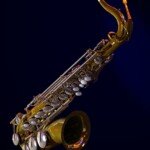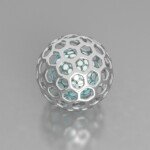Comprehensive Guide to CNC Cylindrical Grinding
In precision manufacturing, achieving extremely tight tolerances and superior surface finishes is often critical. When it comes to rotational symmetry, a CNC cylindrical grinder becomes an indispensable tool. The machine is a sophisticated evolution of traditional grinding methods, harnessing the power of computer numerical control (CNC) to deliver unparalleled precision and efficiency. This guide delves into the intricacies of CNC cylindrical grinding, exploring how it works, applications, benefits, and considerations for effective use.
Learn about CNC cylindrical grinding
Essentially, cylindrical grinding is a process for accurately shaping the outer or inner diameter of a cylindrical or conical workpiece. CNC cylindrical grinding takes this concept to the next level through process automation. Instead of relying solely on manual adjustments and operator skill, CNC control directs the movement of the grinding wheel and workpiece, ensuring superior repeatability and consistency.
The process typically involves the following elements:
- Artifact: The parts being ground are typically held between centers, in chucks, or using other workpiece holding devices.
- grinding wheel: A rotating abrasive tool used to remove material from a workpiece. Grinding wheels come in a variety of sizes, shapes, and abrasives, each suited to a specific application.
- Grinding head: This assembly houses the grinding wheel and motor to enable precise positioning and feed movements.
- Working head: An assembly that holds and rotates the work piece. Carefully control the speed to ensure an even grind.
- CNC controller: this "brain" The control part of the machine, responsible for executing pre-programmed instructions and controlling the movement of all axes.
- Cooling system: Provides a constant flow of coolant to the grinding area to dissipate heat, lubricate contact areas and wash away debris.
Types of CNC cylindrical grinding
CNC cylindrical grinders are available in a variety of configurations, each designed for a specific type of grinding operation:
- Cylindrical grinding: The most common type, used for grinding the outer diameter of cylindrical workpieces. The grinding wheel frame is external, and the workpiece is ground while rotating.
- Internal grinding: For grinding the inner diameter of cylindrical or conical workpieces. The grinding wheel carriage is located inside the part and the workpiece remains stationary or slowly rotates.
- Angle head grinding: The grinding wheel frame is at a certain angle with the workpiece and can grind the outer diameter and the end face or shoulder at the same time.
- Universal cylindrical grinder: Machines capable of performing cylindrical grinding as well as internal cylindrical grinding often also have corner head capabilities. These machines offer more versatility.
- Cam grinding: Special machine for grinding camshafts or complex part contours.
CNC Cylindrical Grinding Process: Step-by-Step Overview
- Parts Preparation and Setup: The workpiece must be carefully cleaned and prepared for grinding. It is then mounted securely on the work head ensuring proper alignment and rigidity.
- Program loading and setup: A CNC program containing the grinding parameters (speed, feed, depth of cut) is loaded into the controller. These programs are usually generated using CAM (Computer Aided Manufacturing) software.
- Wheel dressing and dressing: Before grinding, the grinding wheel needs to be dressed and dressed. Dressing ensures that the grinding wheel is perfectly rounded and concentric, while dressing keeps the abrasive grains sharp, providing optimal cutting performance.
- Grinding operations: The CNC controller directs the grinding wheel carriage and worktable to move according to the programmed instructions. The grinding wheel gradually removes material from the workpiece as it rotates. Multiple passes with gradually decreasing depth of cut are often used to achieve the desired size and finish.
- Coolant Application: Throughout the grinding process, coolant continues to flow to the grinding area to prevent overheating, reduce friction and remove chips (grinding debris).
- Measurement and inspection: After grinding, the workpiece is carefully measured to verify that it meets specified dimensions and tolerances. Also check the surface finish. The offset may be adjusted and the process will repeat.
Application of CNC cylindrical grinding
CNC cylindrical grinding is widely used in various industries where high precision and surface quality are crucial. Some key applications include:
- aerospace: Manufactures precision components for aircraft engines, landing gear and other critical systems.
- car: Produces crankshafts, camshafts, valve assemblies and other engine parts.
- Medical: Manufacturing implants, surgical instruments and other medical devices that require extremely tight tolerances and biocompatible materials.
- Tool and Die Making: Grinding punches, dies and other tool components used in the manufacturing process.
- Bearing manufacturing: Produces precision bearings for a variety of applications.
- Hydraulic industry: Grinding of cylinders, pistons and sleeves.
Advantages of CNC cylindrical grinding
Compared with traditional grinding methods, CNC cylindrical grinding has significant advantages:
- High precision and accuracy: CNC control ensures consistent and precise grinding to achieve tight tolerances.
- Improve surface finish: CNC cylindrical grinding produces superior surface finishes compared to other machining processes.
- Improve productivity: Automation improves productivity by reducing cycle times and minimizing the need for manual intervention.
- Repeatability: The CNC program ensures that every part is ground identically, ensuring consistency from batch to batch.
- Complex geometry functions: CNC allows for the grinding of complex shapes and profiles, including tapers, contours and shapes.
- Reduce scrap rate: Precise control minimizes errors and reduces the likelihood of scrap.
- Ability to maintain tight tolerances: CNC grinders can handle the tightest tolerances.
Precautions for Effective CNC Cylindrical Grinding
While CNC cylindrical grinding offers many advantages, getting the best results requires careful consideration of several factors:
- Grinding wheel selection: Selecting the correct grinding wheel (abrasive type, grit size, bond material) is critical to achieving the desired surface finish and material removal rate.
- Coolant selection: Choosing the right coolant is critical to preventing overheating, lubricating the grinding area and removing chips.
- Workpiece clamping: Safe and rigid workholding is critical to minimizing vibration and ensuring accurate grinding.
- Machine maintenance: Regular maintenance, including lubrication, cleaning and wheel truing/dressing, is critical to maintaining machine accuracy and performance.
- Operator training: A skilled operator is required to effectively program, set up and operate a CNC cylindrical grinder.
- Environmental conditions: Factors such as temperature and humidity can affect machine accuracy.
Where to ground your parts?
If you need high-precision cylindrical grinding, consider huge light. Honglaite is a professional five-axis CNC machining manufacturer. Hongguang has advanced five-axis CNC machining equipment and production technology, specializes in solving metal parts manufacturing problems, and can also provide one-stop post-processing and finishing services. Most materials can be quickly customized and processed. For customized precision machining, Honglaite five-axis CNC machining is the first choice. Customize your precision parts now at the best price!
in conclusion
CNC cylindrical grinding is the cornerstone of precision manufacturing, delivering superior accuracy, surface finish and efficiency for rotationally symmetric parts. By understanding the principles, applications, and considerations outlined in this guide, manufacturers can effectively leverage this powerful technology to meet the growing demand for precision components across diverse industries. The key to achieving optimal performance is careful planning, meticulous execution and a commitment to continuous improvement.
Frequently Asked Questions (FAQ)
Q: What is the difference between cylindrical grinding and surface grinding?
Answer: Cylindrical grinding is used to grind the outer or inner diameter of cylindrical workpieces, while surface grinding is used to grind flat surfaces.
Q: What are the commonly used abrasives for grinding wheels?
Answer: Common abrasives include aluminum oxide, silicon carbide, cubic boron nitride (CBN) and diamond.
Q: How do I choose the right grinding wheel for my application?
A: When selecting a grinding wheel, consider the workpiece material, desired surface finish, material removal rate and machine tool performance. Consult your grinding wheel supplier for specific recommendations.
Q: What is grinding wheel dressing and dressing?
Answer: Dressing restores the roundness and concentricity of the grinding wheel, while dressing sharpens the abrasive grains and exposes new cutting edges.
Q: What are the commonly used coolants for cylindrical grinding?
Answer: Common coolants include water-based emulsion, synthetic coolant and oil-based coolant. Coolant selection depends on the material being ground and the desired surface finish.
Q: How often should I dress and dress my grinding wheels?
A: Dressing and dressing frequency depend on the application, wheel type and machine conditions. For small parts, frequent trimming and trimming is especially necessary to keep the parts within consistent tolerances. As a general rule, grinding wheels should be dressed and dressed any time the surface finish begins to degrade or the material removal rate decreases.
Q: What are the typical tolerances achievable in CNC cylindrical grinding?
A: CNC cylindrical grinding can achieve tolerances of ±0.0001 inch or even tighter, depending on machine capabilities and process control.
Q: What are the common problems in CNC cylindrical grinding?
A: Common problems include chatter, grinding wheel wear, workpiece deformation and surface finish defects.
Q: How to improve the surface finish of cylindrical grinding?
A: Consider using a finer grit grinding wheel, reducing feed speeds, increasing coolant flow, and ensuring proper wheel dressing and dressing.
Q: What role does CAM software play in CNC cylindrical grinding?
Answer: CAM software is used to generate CNC programs for complex grinding operations. It allows the grinding process to be simulated and optimized before it is executed on the machine.










































